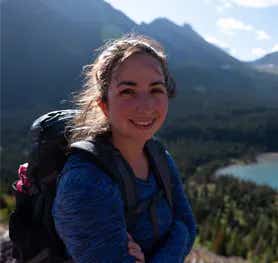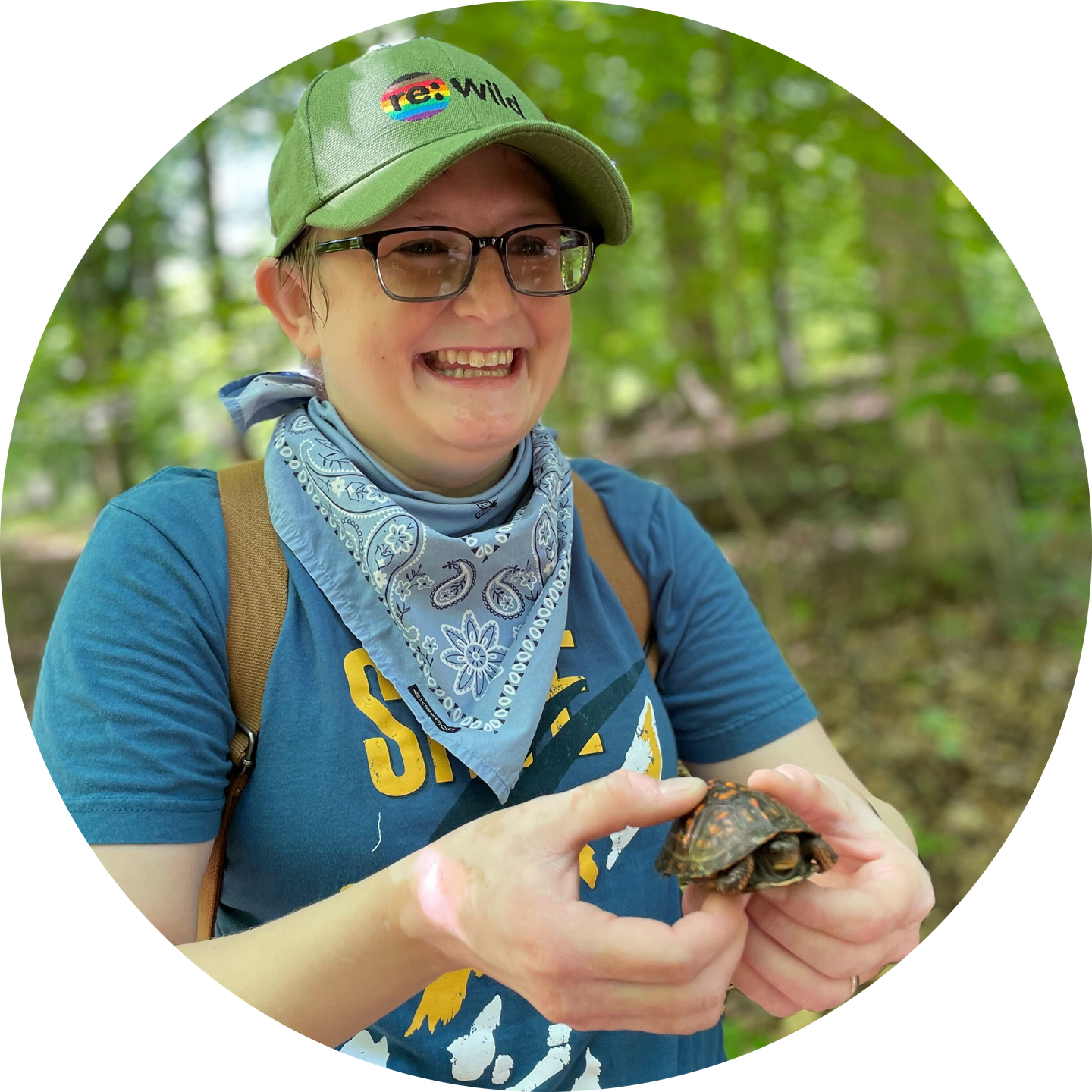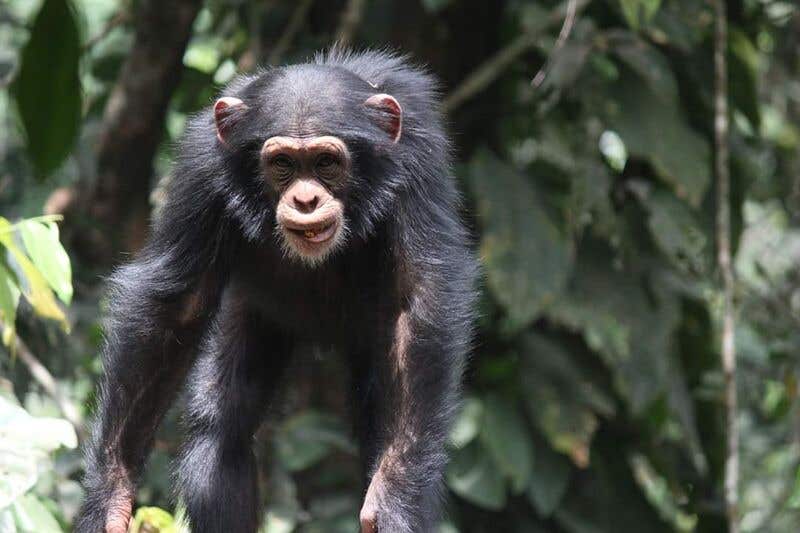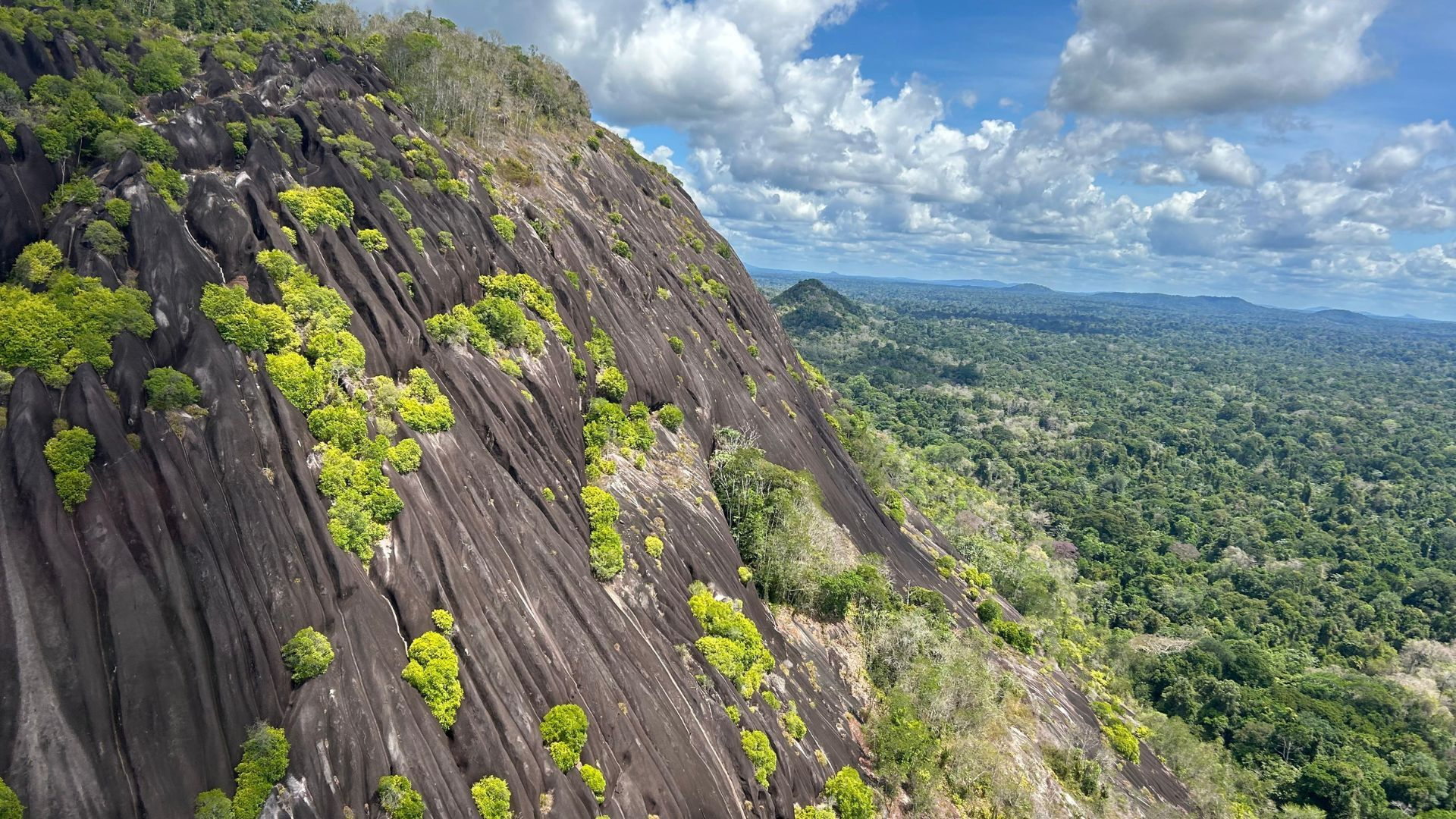A recent study led by researchers from the German Centre for Integrative Biodiversity Research (iDiv), the Martin Luther University Halle-Wittenberg (MLU) and Re:wild shows that the threat of mining to the great ape population in Africa has been greatly underestimated. Their results were published today, April 3 in Science Advances.
“Currently, studies on other species suggest that mining harms apes through pollution, habitat loss, increased hunting pressure, and disease, but this is an incomplete picture,” said Jessica Junker, lead author of the study, researcher at Re:wild and former postdoctoral researcher at iDiv and MLU. “The lack of data sharing by mining projects hampers our scientific understanding of its true impact on great apes and their habitat.”
The rising demand for critical minerals, such as copper, lithium, nickel, cobalt, and other rare earth elements required for the large-scale transition to cleaner energy is causing a surge of mining in Africa, where a large share of those mineral resources is still unexploited. This is driving deforestation of tropical rainforests, which are home to many species, including humans’ closest living relatives, the great apes. The study estimates that the threat of mining to great apes in Africa has been greatly underestimated and that more than one-third of the entire population—nearly 180,000 gorillas, bonobos and chimpanzees—are at risk. The researchers also highlight that because mining companies are not required to make biodiversity data publicly available, the true impact of mining on biodiversity and great apes, in particular, may be even higher.
In their study, the team used data on operational and preoperational mining sites in 17 African nations and defined 10-kilometer (six-mile) buffer zones to account for direct impacts, such as habitat destruction and light and noise pollution.
They also defined 50 kilometer (30-mile) buffer zones for indirect impacts linked to increased human activity near mining sites: New roads and infrastructure are built to access these once-remote areas, and many people migrate to these areas looking for employment. This in turn, increases pressures on great apes and their habitat through increased hunting, habitat loss, and higher risk of disease transmission.
By integrating data on the density distribution of great apes, the researchers investigated how many African apes could potentially be negatively impacted by mining and mapped areas where frequent mining and high ape densities overlapped.
In the West African countries of Liberia, Sierra Leone, Mali, and Guinea, overlaps of high ape density and mining areas—including the 10-kilometer (six-mile) and 50- kilometer (30-mile) buffer zones—were the largest. The most significant overlap of mining and chimpanzee density—both in terms of proportion of population and overall numbers—was found in Guinea. More than 23,000 chimpanzees, or up to 83% of Guinea’s ape population, could be directly or indirectly impacted by mining activities. In general, the most sensitive areas—those with relatively high ape and mining densities—are not protected.
The researchers also explored how mining areas intersect with what is considered ‘critical habitat’—regions crucial for their unique biodiversity, unrelated to apes. They found a noteworthy 20% overlap between the two. Critical habitat designation entails strict environmental regulations, especially for mining projects seeking funding from entities like the International Finance Corporation (IFC)—a branch of the World Bank which lends funds to the private sector—or other lenders adhering to similar standards, and aiming to operate within these zones.
Previous efforts to map critical habitat in Africa have overlooked significant portions of ape habitats that would qualify under international benchmarks such as the IFC Performance Standard 6.
“Companies operating in these areas should have adequate mitigation and compensation schemes in place to minimize their impact, which seems unlikely, given that most companies lack robust species baseline data that are required to inform these actions,” said Tenekwetche Sop, manager of the IUCN SSC A.P.E.S. Database at the Senckenberg Museum of Natural History, a repository of all great ape population data. “Encouraging these companies to share their invaluable ape survey data with our database serves as a pivotal step towards transparency in their operations. Only through such collaborative efforts can we comprehensively gauge the true extent of mining activities' effects on great apes and their habitats.”
Even though the indirect and long-term impacts of mining are difficult to quantify, they often extend well beyond the boundaries of the actual mining project. Currently, these risks are rarely considered and mitigated by mining companies. Compensation or offset is then based on an approximation of impacts, which the researchers suggest is often inaccurate, and underestimated. Furthermore, current offset schemes are developed to last as long as mining projects are active (usually c.20 years), whereas most mining impacts on great apes are permanent.
“Mining companies need to focus on avoiding their impacts on great apes as much as possible and use offsetting as a last resort as there is currently no example of a great ape offset that has been successful”, said Genevieve Campbell, lead of the IUCN SSC PSG SGA/SSA ARRC Task Force and senior researcher at Re:wild. ‘’Avoidance needs to take place already during the exploration phase, but unfortunately, this phase is poorly regulated and ‘baseline data’ are collected by companies after many years of exploration and habitat destruction have taken place. These data then do not accurately reflect the original state of the great ape populations in the area before mining impacts.’’
Authors on the paper include: Jessica Junker, Luise Quoss, Jose Valdez, Mimi Arandjelovic, Abdulai Barrie, Genevieve Campbell, Stefanie Heinicke, Tatyana Humle, Célestin Yao Kouakou, Hjalmar S. Kühl, Isabel Ordaz-Nemeth, Henrique M. Pereira, Helga Rainer, Johannes Refisch, Laura Sonter and Tenekwetche Sop.
###
Photo: A Western Chimpanzee in Guinea. (Photo by Maegan Fitzgerald)
Re:wild Re:wild protects and restores the wild.We have a singular and powerful focus: the wild as the most effective solution to the interconnected climate, biodiversity and human wellbeing crises. Founded by a group of renowned conservation scientists together with Leonardo DiCaprio, Re:wild is a force multiplier that brings together Indigenous peoples, local communities, influential leaders, nongovernmental organizations, governments, companies and the public to protect and rewild at the scale and speed we need. Learn more at rewild.org.

Devin Murphy
Writer
Devin Murphy is Re:wilds’s senior communications specialist and helps Re:wild and its partners tell stories about the work they do to protect wildlife and wildlands around the planet. Her favorite stories about conservation include fascinating and little-known species and the dedicated humans protecting them.




